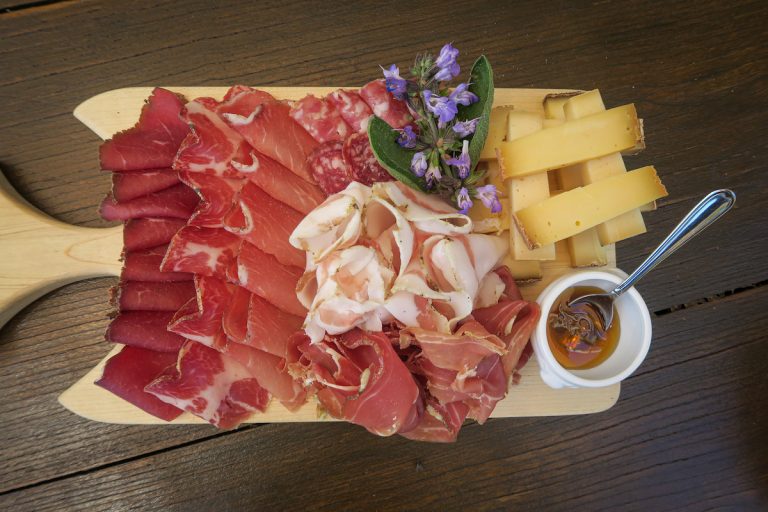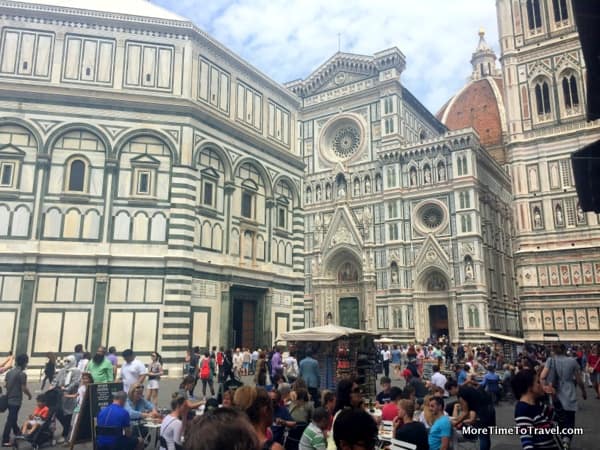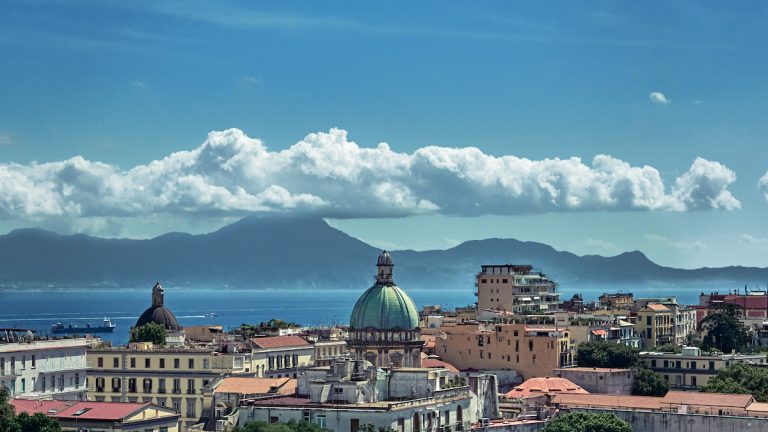Why Chefs And Foodies Fall In Love With Fontina Cheese

Steep, high-altitude, unpolluted pastures, terraced on mountainsides covered with lush, aromatic grasses.
This is where Valdostana cows, sheep, and goats graze, the ones that ultimately produce the wonderful cheese and dairy products showcased in the new MHz Choice travel series, Le Petit Tour.

The Valle d’Aosta (Aosta Valley), considered the heart of the Italian Alps, is bordered by France and Switzerland. Surrounded by some of the highest peaks in Europe—Mont Blanc, Matterhorn (Monte Cervino), Monte Rosa, and Gran Paradiso—it is the smallest, and many would say most scenic, region in Italy.
However, when it comes to cheese, there is much more to creating these artisanal food products than terroir and a spectacular setting alone.
The Aosta Valley takes pride in its skilled cheesemakers who are passionate about their livelihood, making around 100 different types of cheese. Using painstakingly slow methods for aging and ripening, passed down from generation to generation, they create small batches of their products, mostly by hand. Many cheesemakers also breed their own cattle.
Fontina: Prized cheese of the Aosta Valley

Whether you are a foodie or a chef, it is easy to fall in love with Fontina—undoubtedly the Aosta Valley’s best-known cheese product. Fontina has also become one of the most recognized cheeses within and beyond Italy’s borders.
This cow’s milk cheese, made with unpasteurized whole milk, has a rich history. “Fontina cheese has been made in northern Italy since the 12th century,” says food historian and cookbook author Francine Segan. “The word ‘fontina’ was first documented in 1270, referring to a particular land area. Over time, the name came to be used for the cheese made in the Fontin mountains,” she says.
The cheese is pale yellow in color, semi-soft to hard in texture, mild to medium-sharp in flavor, with a thin tan or orange-brown rind. It typically has a few small holes called “eyes.” Texture and flavor vary depending on the amount of time the cheese has aged, but its fat content of 45% is consistent.
“The cheese is wildly popular because of its rich, nutty, almost sweet flavor with just the right amount of cheese tang,” says Segan.
In summer, the cheese is made in the small chalets that dot the hillsides; in winter months, it’s made in the valleys’ creameries. When the cows are fed reaped hay in winter, the color of the cheese produced from the milk is deeper than that of summer.
“The European Union (EU) assigned special DOP (Deonominazione di Origine Protetta) status to several categories of cheese, including Fontina and Fromadzo,” Segan explains. “These DOP cheeses may only be produced in designated geographic areas of northern Italy, using specific raw materials and techniques, and following step-by-step procedures.”
DOP Fontina, recognized by the EU in 1996, is always produced with whole milk from the Val d’Aosta breed of cows (red-brindle, black-brindle, chestnut), obtained in one milking. The cheese wheels are marked with a stamp, guaranteeing their authenticity and quality, by the Fontina DOP Consortium of Producers and Protection.
Imported DOP Fontina cheese is available from a number of online Italian cheesemongers, grocery stores and specialty shops. “I highly recommend getting the real deal when buying cheese: Only Fontina from Italy, from the Valle d’Aosta, with a DOP label,” says Segan.
A cheese with versatility

“Fontina is a great cheese to just cut and eat on a board with some wine, fruit, and chestnuts, says chef Ignazio Podda, who was born and trained in the culinary arts in the Aosta Valley. It pairs well with both bold red and dry fruity white wines.
“It is also one of the most versatile cheeses for cooking,” says Podda. The chef calls Fontina one of the ‘great cooking cheeses” because of the zest it can bring to ordinary soups and pasta.
“It melts beautifully, too, when paired with meats, such as Cotoletta alla Valdostana (veal cutlets stuffed with ham and Fontina),” he adds. “It can be its own main course melted into Fonduta (fondue) and served with cubes of pane nero (a traditional black rye bread of Aosta).”
Podda prefers the summer version. “The cheese is made from milk gathered while cows graze on fresh grass and mountain flowers, while the winter version is a bit less perfumed, coming from them eating hay, but they’re both great choices for eating and cooking,” he says.
For more than 1000 years, the Fair of Sant’Orso (Fiera di Sant’Orso), held annually in January in the city of Aosta (the capital of the D’Aosta Valley region), celebrates the local artisans who create traditional crafts and food products. Fair participants especially enjoy many of the traditional dishes made with Fontina.

Frances Segan graciously agreed to share this traditional recipe from Valle d’Aosta, which is reprinted from her book, Pasta Modern: New and Inspired Recipes from Italy (Stewart, Tabori & Chang).
The recipe is a specialty of Ozein, a small town in the Valle d’Aosta that each year hosts a festival called La sagra della Fav, in honor of this luscious dish.
“I love the earthy nutty flavor of fresh fava beans in combination with the crunchy bread bits and creamy Fontina cheese,” she says. “It’s one of the few pasta dishes from Valle d’Aosta, as that northernmost Italian region specializes more in polenta and rice. It’s made with small tube pasta called ditalini, ‘little thimbles.'”
Cheesy Ditalini with Crunchy Black Bread (Favó con Pane Nero)

This recipe showcasing ditalini pasta, Fontina cheese and fava beans is a specialty of Ozein, a small town in the Valle d’Aosta that each year hosts a festival called La sagra della Fav, in honor of this luscious dish.
Ingredients
- 1- 1/2 pounds fresh fava beans
- 7 tablespoons butter, plus more
- 2 to 3 thick slices dark whole-grain bread, cut into cubes
- 1 to 2 large shallot, thinly sliced in rounds
- 4 large ripe tomatoes, peeled, seeded and diced
- 3 to 4 rounded tablespoons double or triple tomato concentrate
- 3/4 pound ditalini pasta
- 1/4 pound fontina cheese, cut into small pieces
- Salt and black pepper
Instructions
- Shell the fava beans and boil them in salted water in a large saucepan until tender. Remove the fava beans using a slotted spoon, but save the water. Peel the beans; set them aside.
- Meanwhile, cook the butter in a saucepan until it begins to turn golden, add the bread and fry until toasted on all sides. Remove the bread, set aside. In the same pan, sauté the shallots until soft, adding a little more butter, if needed. Add the tomatoes, tomato concentrate, and fava beans and cook for a few minutes.
- Cook the pasta in the fava bean water until al dente, drain, and add to the sauce with little of the cooking liquid, stirring until well combined. Add the cheese and stir until completely melted.
- Just before serving, stir in the toasted bread, season to taste with salt and pepper.
Notes
"I love the earthy nutty flavor of fresh fava beans in combination with the crunchy bread bits and creamy Fontina cheese. It’s one of the few pasta dishes from Valle d’Aosta, as that northernmost Italian region specializes more in polenta and rice. It’s made with small tube pasta called ditalini, 'little thimbles.'"
Learn more about Aosta Valley cheeses:
Episode 1 of Le Petit Tour highlights Fontina d’Alpeggio and Beaufort Chalet d’Alpage, an Alpine cheese in the Gruyere family, made and matured at high altitudes just across the border in France.
Episode 3 of Le Petit Tour features two Alpine goat cheeses, Formaggio di Capra and Fromage de Chevre, from Italy and France, respectively.
Read about these and other cheese and dairy products at the Official Tourism Site of the Valle d’Aosta.
For information about tourism in the Aosta Valley, visit the region’s official tourism website and the Italian National Tourist Board website.
Disclosure: The author was commissioned to write a series of posts about Le Petit Tour but any opinions expressed in this post are her own.
Also on More Time to Travel:
- Le Petit Tour: Behind the Scenes of A New Food Travel Series
- Wines of the Aosta Valley: Come Sip and Savor
- How To Create an Aosta Valley Cheese Board
- Savoring the Flavors of the Aosta Valley on Le Petit Tour
- Discover the Aosta Valley: A Unique Corner of Italy
Save to Pinterest!!






